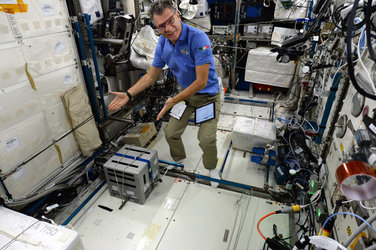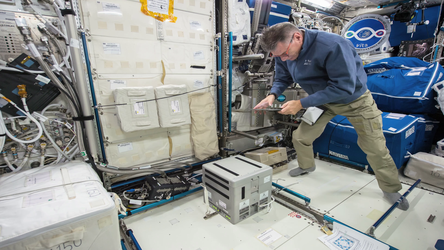Accept all cookies Accept only essential cookies See our Cookie Notice

About ESA
The European Space Agency (ESA) is Europe’s gateway to space. Its mission is to shape the development of Europe’s space capability and ensure that investment in space continues to deliver benefits to the citizens of Europe and the world.
Highlights
ESA - United space in Europe
This is ESA ESA facts Member States & Cooperating States Funding Director General Top management For Member State Delegations European vision European Space Policy ESA & EU Space Councils Responsibility & Sustainability Annual Report Calendar of meetings Corporate newsEstablishments & sites
ESA Headquarters ESA ESTEC ESA ESOC ESA ESRIN ESA EAC ESA ESAC Europe's Spaceport ESA ESEC ESA ECSAT Brussels Office Washington OfficeWorking with ESA
Business with ESA ESA Commercialisation Gateway Law at ESA Careers Cyber resilience at ESA IT at ESA Newsroom Partnerships Merchandising Licence Education Open Space Innovation Platform Integrity and Reporting Administrative Tribunal Health and SafetyMore about ESA
History ESA Historical Archives Exhibitions Publications Art & Culture ESA Merchandise Kids Diversity ESA Brand Centre ESA ChampionsSpace in Member States
Find out more about space activities in our 23 Member States, and understand how ESA works together with their national agencies, institutions and organisations.
Science & Exploration
Exploring our Solar System and unlocking the secrets of the Universe
Go to topicAstronauts
Missions
Juice Euclid Webb Solar Orbiter BepiColombo Gaia ExoMars Cheops Exoplanet missions More missionsActivities
International Space Station Orion service module Gateway Concordia Caves & Pangaea BenefitsLatest
Space Safety
Protecting life and infrastructure on Earth and in orbit
Go to topicAsteroids
Asteroids and Planetary Defence Asteroid danger explained Flyeye telescope: asteroid detection Hera mission: asteroid deflection Near-Earth Object Coordination CentreSpace junk
About space debris Space debris by the numbers Space Environment Report In space refuelling, refurbishing and removingSafety from space
Clean Space ecodesign Zero Debris Technologies Space for Earth Supporting Sustainable DevelopmentLatest
Applications
Using space to benefit citizens and meet future challenges on Earth
Go to topicObserving the Earth
Observing the Earth Future EO Copernicus Meteorology Space for our climate Satellite missionsCommercialisation
ESA Commercialisation Gateway Open Space Innovation Platform Business Incubation ESA Space SolutionsEnabling & Support
Making space accessible and developing the technologies for the future
Go to topicBuilding missions
Space Engineering and Technology Test centre Laboratories Concurrent Design Facility Preparing for the future Shaping the Future Discovery and Preparation Advanced Concepts TeamSpace transportation
Space Transportation Ariane Vega Space Rider Future space transportation Boost! Europe's Spaceport Launches from Europe's Spaceport from 2012Latest

Kubik on Space Station
Thank you for liking
You have already liked this page, you can only like it once!
A miniaturised laboratory inside the orbital laboratory that is ESA’s Columbus module, this 40 cm cube has been one of its quiet scientific triumphs.
Kubik – from the Russian for cube – has been working aboard the International Space Station since before Columbus’ arrival in February 2008.
“Kubik hosts a wide range of life science experiments in weightlessness with minimal crew involvement,” explains Jutta Krause of the payload development team. “Research teams prepare their experiments and make use of existing or custom-built ‘experiment units’, which are each about the size of a box of pocket tissues.
“Once slotted into Kubik by an astronaut, they are automatically activated through internal electrical connections, running autonomously on a programmed timeline until they are finally retrieved for return to Earth.
“At the centre of the temperature-controlled Kubik is a centrifuge to simulate gravity, so double experiments can be run with one unit in microgravity plus an Earth-gravity control or intermediate gravity level – giving researchers insight into whether any results they observe might be related to weightlessness or some other environmental factor, such as space radiation.”
The challenge for researchers is to miniaturise their experiments to fit within the confines of these compact units, adds team member Janine Liedtke: “We aim to refurbish experiment units as much as possible, so in some cases teams can adapt a previously flown unit, or else we can tailor new units to their needs.
“Why fly biological samples in weightlessness? Because we know many biological systems are partially gravity-dependent, so by ‘taking away’ gravity researchers can gain broader insight into how they work.
“To give an idea, Kubik has over the years hosted samples of bacteria, fungi, human white blood cells and stem cells from bone marrow and umbilical cords, plant seedlings, and swimming tadpoles. A pending payload is designed to examine how microbial biofilms interact with rock surfaces across different gravity levels, from weightlessness to Mars and Earth gravity.”
Experiment times are limited because the samples are biological – part of the work is carefully planning the mission scenario. Even the hours needed for the ascent and descent of the experiment unit to and from Columbus are carefully accounted for, to ensure that they are back again within a couple of weeks of launch, depending on the sensitivity of the samples.
“We’ve been using the Soyuz, and now the SpaceX Dragon,” adds Jutta. “Typically, when one vehicle goes up another one comes down. This ensures that experiments can be up- and downloaded rapidly.
“A fixative is often added to an experiment at its conclusion, so researchers get to examine it as it was in microgravity. Additionally, units can be refrigerated during their return trip.”
Twelve experiments from ESA and national space agencies have so far been run in Kubik, with ESA planning seven more by the end of this decade. The facility is due to be upgraded with new electronics, to offer more features and keep it fully operational into its second decade.
Contact Jutta.Krause@esa.int for more information.
-
CREDIT
NASA -
LICENCE
ESA Standard Licence

Installing Nano Antioxidants into Kubik incubator

Introducing Kubik

Setting up Kubik

Working on Triplelux experiment















 Germany
Germany
 Austria
Austria
 Belgium
Belgium
 Denmark
Denmark
 Spain
Spain
 Estonia
Estonia
 Finland
Finland
 France
France
 Greece
Greece
 Hungary
Hungary
 Ireland
Ireland
 Italy
Italy
 Luxembourg
Luxembourg
 Norway
Norway
 The Netherlands
The Netherlands
 Poland
Poland
 Portugal
Portugal
 Czechia
Czechia
 Romania
Romania
 United Kingdom
United Kingdom
 Slovenia
Slovenia
 Sweden
Sweden
 Switzerland
Switzerland
























